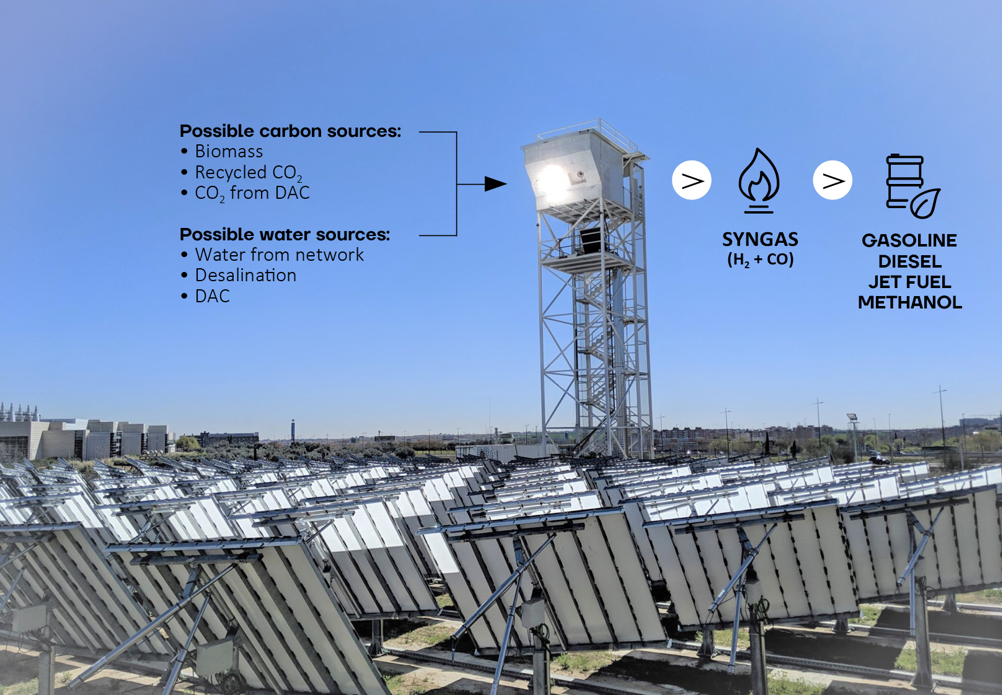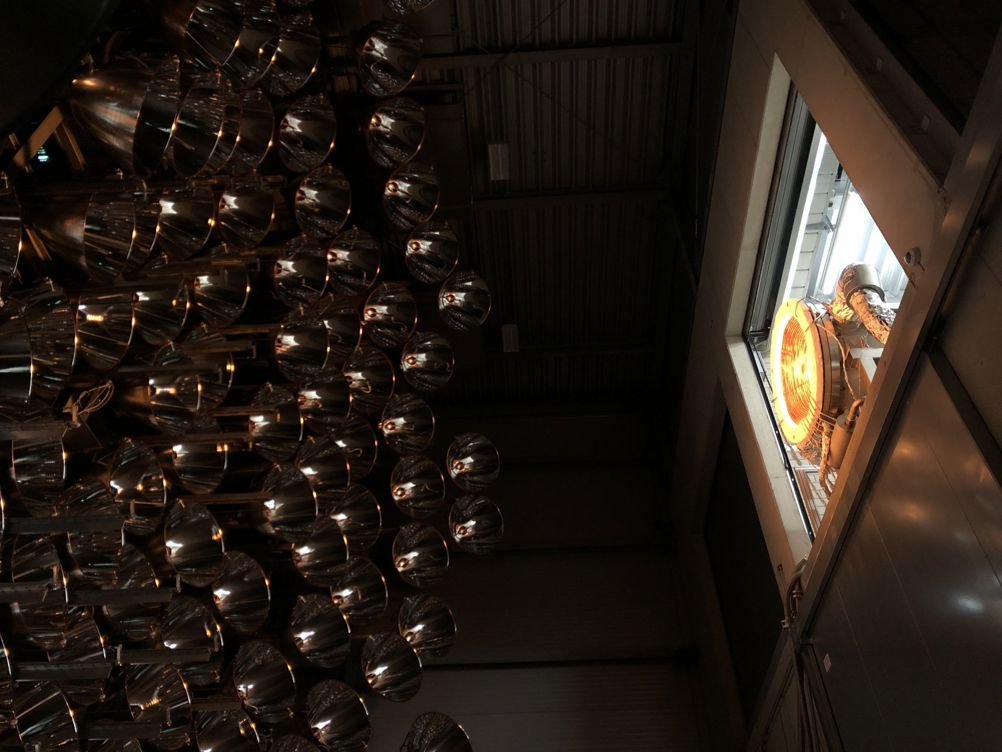Synhelion’s process involves harvesting concentrated solar power (CSP) using heliostats, then using the heat – in excess of 1500°C – to create syngas, which can in turn be used to create synthetic fuels such as kerosene (jet fuel) or petrol.
Solar power tech could help produce next generation synthetic fuels
“When you burn a fuel, you basically have the production of heat and water and carbon dioxide,” Dr Gianluca Ambrosetti, co-founder and CEO of Synhelion, told The Engineer last year. “Basically, what we do is look at processes that reverse that, and the most straightforward way is to take CO2, water vapour and use heat to try and reverse that process.”

Spun out of ETH Zurich in 2016, Synhelion has since then been making strides towards the commercialisation of the process. According to the company, it recently passed the last major technological milestone for the industrial production of solar fuels, manufacturing solar syngas on an industrial scale. DAWN will now be the first industrial-scale plant to capitalise on the breakthrough.
The plant will feature a 20-meter-high solar tower with a heliostat field with a total mirror surface of 1,500 m2. The solar tower houses three innovations developed by Synhelion: a solar receiver, a thermochemical reactor, and thermal energy storage that is claimed to enable cost-efficient operation around the clock. Synhelion says the industrial demonstration plant will produce several thousand litres of synthetic fuel per year.
“With the construction of DAWN, Synhelion can prove its successful business model and establish itself as a serious player among synthetic fuel producers,” said Patrick Hilger, managing director of Synhelion Germany. “The plant will demonstrate that solar fuels are not just a theoretical construct but will soon actively contribute to decarbonizing aviation and long-distance transportation.”

DAWN will be built at Brainergy Park in Jülich, Germany, which already serves as the headquarters of Synhelion Germany, as well as being home to project partners including the German Aerospace Centre (DLR) and the Solar Institute Jülich of Aachen University of Applied Sciences. Another partner, Swiss International, is set to be the first airline to fly using Synhelion’s solar kerosene. Though the amount of fuel produced at DAWN will be modest, it will serve as a model for future solar plants. Synhelion claims that a similar sized plant in a particularly sunny location could produce around 150,000 litres of solar fuel each year.
“With DAWN we are laying the foundation for the industrial production of solar fuels,” said Dr Ambrosetti. “The experience we gain will benefit us in the construction of many more and larger plants. Our goal is to reach a production capacity of 875 million litres of fuel per year in future commercial plants by 2030.”
Are solar fuels the future of sustainable aviation? Let us know what you think in the comments section below.











McMurtry Spéirling defies gravity using fan downforce
Ground effect fans were banned from competitive motorsport from the end of the 1978 season following the introduction of Gordon Murray's Brabham...